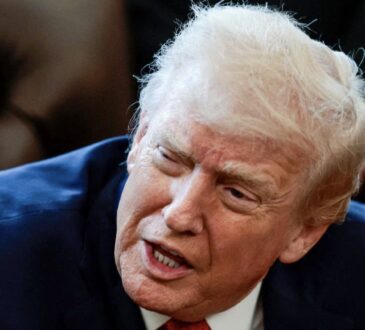Forget President Donald Trump’s Tariffs and Their Inflationary Impact — This Is Wall Street’s Ticking Time Bomb, Based on What History Tells Us

The U.S. stock market has been making headlines almost every day, climbing to record highs and surprising even seasoned investors. At the same time, the economy is showing cracks beneath the surface, leaving many people uneasy about how long this winning streak can really last.
President Trump’s tariff and trade policies have taken center stage because they directly affect how much it costs to make and buy goods in America. These policies are designed to protect American industries by charging extra fees on goods coming into the country, but they also push up prices for consumers and businesses.
When costs rise across the board, it shows up in the inflation rate, which measures how much everyday goods and services are getting more expensive.
Since these tariffs began to take hold, inflation has risen noticeably, which makes it harder for families to stretch their money and puts pressure on employers already dealing with a weaker job market.
Economists have pointed out that tariffs can often backfire. While they are supposed to protect American companies by making foreign products more expensive, they also raise costs for U.S.
manufacturers who rely on imported parts to make their products. For example, a tariff on steel or electronic components doesn’t just make those items pricier—it also increases the cost of everything built with them, from cars to household appliances.
This trickles down to consumers and can reignite inflation, forcing people to pay more without necessarily earning more. As history has shown, when inflation rises too quickly, it can weaken the economy and slow down job growth.
Despite these risks, Wall Street has been celebrating. The S\&P 500, the Dow Jones Industrial Average, and the Nasdaq have all reached new highs. Investors are excited about the potential of artificial intelligence, which experts believe could add trillions of dollars to the global economy in the coming years.
There is also hope that the Federal Reserve will cut interest rates, making borrowing cheaper and encouraging businesses and consumers to spend more. Together, these factors have created a wave of optimism that has fueled risk-taking and pushed stock prices higher than ever.
But history teaches us that when the market seems unstoppable, it is often at its most vulnerable. The danger this time may not be tariffs or even inflation, but the sheer price of stocks themselves.
A widely respected measure called the Shiller price-to-earnings ratio shows just how expensive stocks have become. This ratio looks at average company earnings over the past ten years, adjusted for inflation, to give a fairer picture of value.
Normally, the number sits around 17, but right now it is close to 40. That is more than double its usual level and one of the highest readings in more than 150 years.
In the past, whenever this ratio has stayed above 30 for any length of time, the market eventually experienced a steep fall. These declines have ranged anywhere from 20 percent to as much as 50 percent or more, as seen during the dot-com crash in the early 2000s.
It is important to understand that this doesn’t mean the market will crash tomorrow. High valuations can last for months or even years, especially if investors remain excited about new technologies like artificial intelligence or if interest rates are lowered. But history is very clear: inflated stock prices don’t last forever. When they finally come down, they tend to fall hard.
For investors, the silver lining is that downturns, while painful, don’t usually last as long as the good times. Studies of past market cycles show that bear markets, when stocks fall, typically last less than a year on average. By contrast, bull markets, when stocks rise, usually continue for more than three years. This means that while short-term losses can be frightening, people who invest for the long run and avoid panic-selling often come out ahead when the market recovers.
In short, Wall Street is enjoying one of its brightest moments right now, but storm clouds are forming in the distance. President Trump’s trade policies have added uncertainty, inflation is creeping higher, and stock prices have climbed to levels that history suggests are unsustainable.
Investors who chase quick profits may get caught off guard when the tide turns. But those who stay focused on the long-term picture and ride out the ups and downs are more likely to benefit from the market’s resilience over time.




